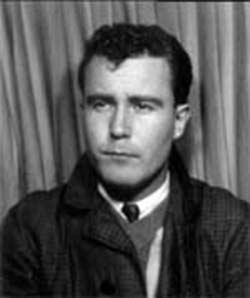 The Tomcat Chronicles: Erotic Adventures of a Gay Liberation Pioneer
The Tomcat Chronicles: Erotic Adventures of a Gay Liberation Pioneer
by Jack Nichols
Published by Routledge
Published May 17, 2004
History (memoir)
256 pgs. • Find on Amazon.com
Reviewed by Stephen O. Murray
June 21, 2006
Both the documentary Screaming Queens and Tomcat Chronicles, Jack Nichols’ memoir of his footloose youthful adventures during 1961–64 (when he was 23–26) undercut the myth of Stonewall as marking a seismic shift from closeted acceptance of police harassment to open rejection of stigmas (gender nonconformity in one instance, masculinist homosexuality in the other) that rationalized police harassment (which include shakedowns and bribery).
There were queens who fought back before the summer of 1969 (and in San Francisco there were organizations that had largely ended police harassment) and there were also gay men who were not wracked with guilt and the belief that they were sick—and males who wanted to have sex with other males did so, often with men who considered themselves “straight” while being sexually receptive to another male.
 Nichols hustled for a while and played the role of the masculine 6’3″ blank slate onto which johns wrote their fantasies. He was pained by the low self-esteem of many of those who rented his flesh but seems to have been self-confident and unashamed of loving (and having sex with) men.
Nichols hustled for a while and played the role of the masculine 6’3″ blank slate onto which johns wrote their fantasies. He was pained by the low self-esteem of many of those who rented his flesh but seems to have been self-confident and unashamed of loving (and having sex with) men.
He had been living in a very “open relationship” since 1957, when he was nineteen, with a sailor who was the son of an Assembly of God preacher. In 1961, he felt the need “to challenge the security and order of my settled home life” and went “on the road” into what he labeled in retrospect something of a delayed adolescence (less delayed than that of many who burst out of the closet at a later age than 23).
Nichols’ book recalls specific sexual encounters with a number of men. He was interested in what other men wanted, though what some men wanted puzzled him. And although some would label his sexual explorations “promiscuous,” he was on a romantic quest.
The book starts with meeting a self-labeled “hillbilly” on a Florida beach and having a passionate relationship. Warren was “the man who got away.” Jack found Warren’s lesbian sister, Donna, and supported her (in various stops) for several years while enjoying other “mountain men” (his “type”). There are others, including Donna’s similarly free-loading girlfriends, who live and/or travel with Jack…and eventually he finds Warren again and takes on supporting brother and sister, both of them disinclined to work for a living.
The book ends with meeting the love of Jack’s life, Lige Clarke, with whom he wrote four books and edited the newspaper GAY from 1969 to 1973. (Clarke was murdered at a police roadblock in Mexico in 1975.) Clarke was a sailor who came into the Hideway, a gay bar on Capitol Hill in Washington.
Along with the observations of his wild but not in his view misspent “belated adolescence” are sympathetic sketches of two homophile movement pioneers, Donald Webster Cory (whose 1951 book The Homosexual in America was prized by the young Nichols) and Franklin Kameny, the astronomer fired by the Army for being gay who has tirelessly opposed discrimination by the federal government (and, insofar, as they are different, the government of the federal District of Columbia). Kameny and Nichols cofounded the D.C. Mattachine Society chapter in 1961 and organized a gay/lesbian picketing of the White House on 17 April 1965. Nichols and Kameny were active in the challenge to classification of homosexuality as psychopathology, with Nichols laying out the case for making that a priority, beginning in 1963. Gore Vidal also makes an appearance, in a less flattering light.
There is a cover blurb by the series editor (James Sears) proclaiming that The Tomcat Chronicles (2004) is “a gay pioneer’s version of City of Night.” I’m not completely sure what this is supposed to mean, but The Tomcat Chronicles has very little in common with the terminally hung-up about his image as an uninvolved top of John Rechy’s overwrought (but not unpoetic) City of Night. Nichols recalls himself enjoying sex, not being hung up about roles (though he was usually a top, he was more than willing to fellate men he found attractive), and definitely lacking the Catholic guilt in which Rechy wallowed. Indeed, he was bored by “play acting,” including his own during his period of hustling and rejected equating sexual receptivity with effeminacy. The Tomcat Chronicles seems more akin to On the Road with explicitness about the homosex that Kerouac had Catholic guilt and macho hangups about (that resemble Rechy’s) but whose self-mythologization edited out his own homosexual relations without managing to obliterate the homoeroticism of his adoration of Neal Cassady.
(The rejection of any necessary link between sexual receptivity and femininity is fundamental to “modern gay” homosexuality in contrast to heterogender homosexuality, which did not entirely disappear with the emergence of the gay liberation movement, and is much celebrated by “queer theorists” who “don’t want to be defined” by their sexual object choice and are oblivious to the continued—and in my view irremediable—conception of “queer” as gender “deviant.” Nichols’ book is a reminder that living and theorizing “gay homosexuality” did not start in 1969 (or in NYC).
The book includes a number of photographs of Nichols and some of his friends (but not Warren or Donna). Nichols seems to have been quite protean. I barely recognize the man in some pictures of him being the same man in others.
originally published on epinions, 21 June 2006
©2006, 2016, Stephen O. Murray

